 I see it all the time on Facebook groups. Someone asks what the architectural style of their home is and someone comments, “It’s a bungalow.” And even if the statement is correct, the answer is wrong. That’s because the term bungalow does not reference an architectural style at all; it’s an architectural form, meaning the general shape of the building. And that form can come in a variety of architectural styles.
I see it all the time on Facebook groups. Someone asks what the architectural style of their home is and someone comments, “It’s a bungalow.” And even if the statement is correct, the answer is wrong. That’s because the term bungalow does not reference an architectural style at all; it’s an architectural form, meaning the general shape of the building. And that form can come in a variety of architectural styles.
So what is a bungalow? Here’s the definition according to the Merriam-Webster dictionary:
bungalow (noun)
bəŋ-gə-ˌlō: a one-storied house with a low-pitched roof
also : a house having one and a half stories and usually a front porch
a low house, with a broad front porch, having either no upper floor or upper rooms set in the roof, typically with dormer windows
WHAT IS A BUNGALOW? FORM VS STYLE
So, if you want to know if a house a bungalow, apply the simple definition or follow the oversimplified graphic below. Look at the shape of the house, not the column type, window style, or any other element that helps define the architectural style of a house and you should get your answer pretty easily.
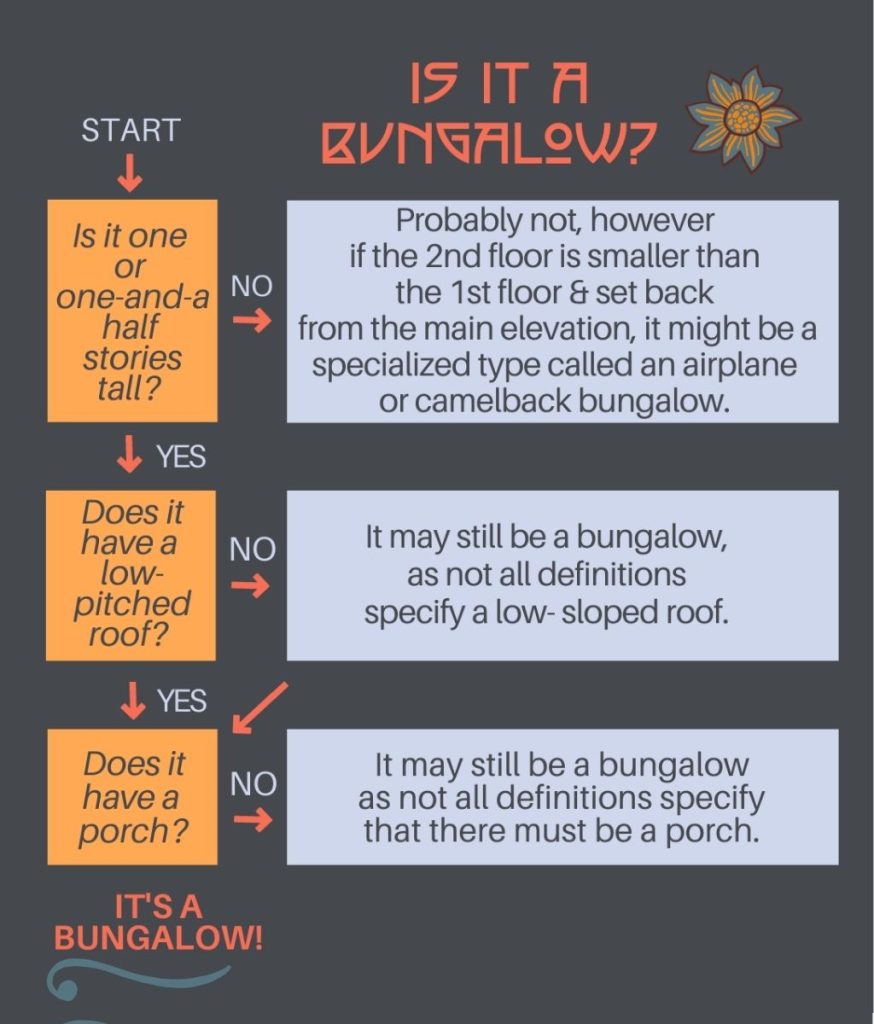
So, let’s apply this to some homes of different architectural styles for a fun, nerdy exercise.
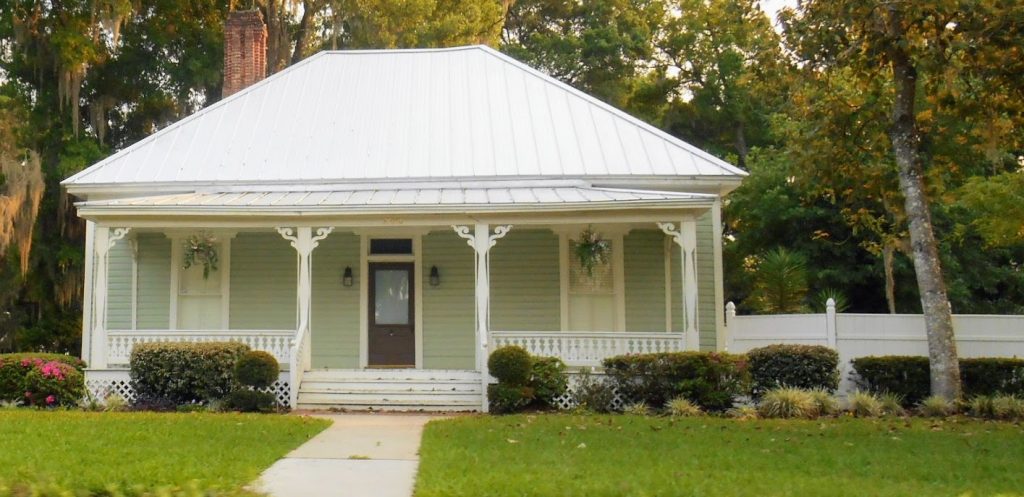
This Folk Victorian house is one story with a full width porch; however, it has a steep pitched roof which by some definitions would preclude it from being a bungalow. That said, the term “bungalow” originated from housing in India that had steeper pitched roofs, so I consider this a bungalow.

This Craftsman house ticks all the boxes to be called a bungalow with its one-story, low pitched roof and wide porch form.
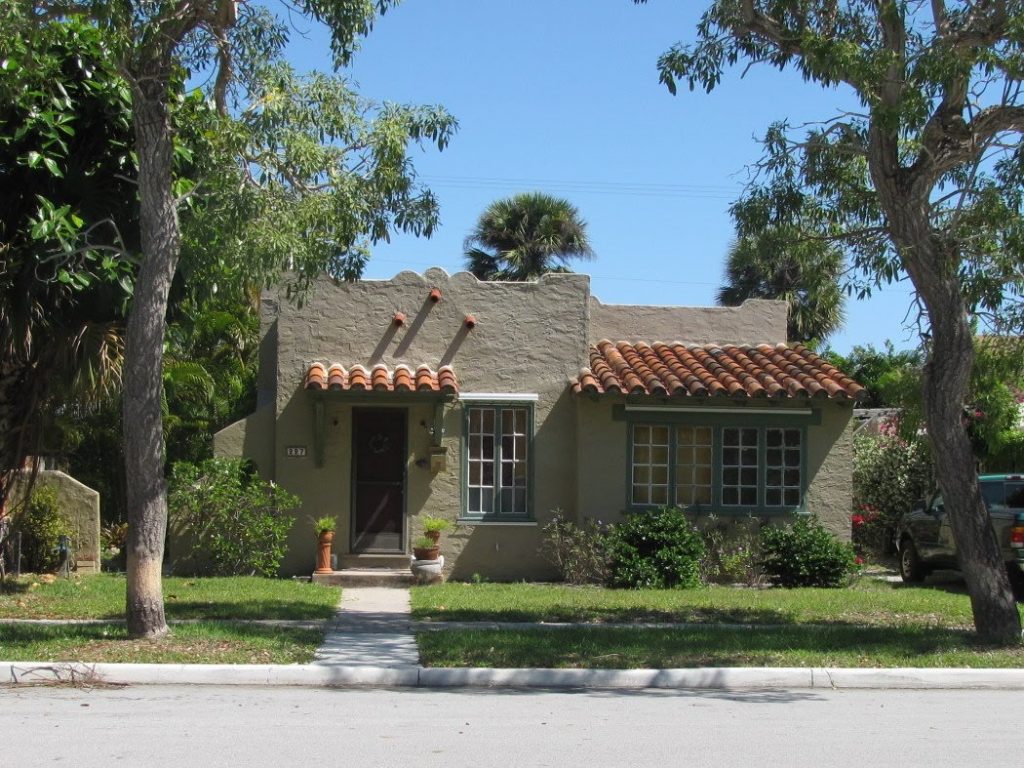
This little Mission style house is one story, has a low pitched roof, but only a very small portico. I would still put it in the bungalow category as many definitions of a bungalow do not reference a porch.
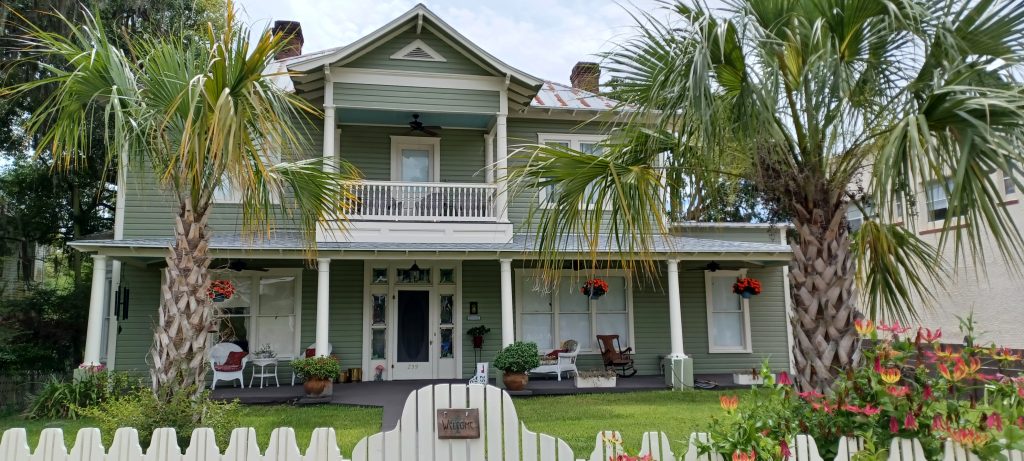
This unusually styled house built in 1911 has a full two stories. Therefore, it is not a bungalow, but I love it anyway!
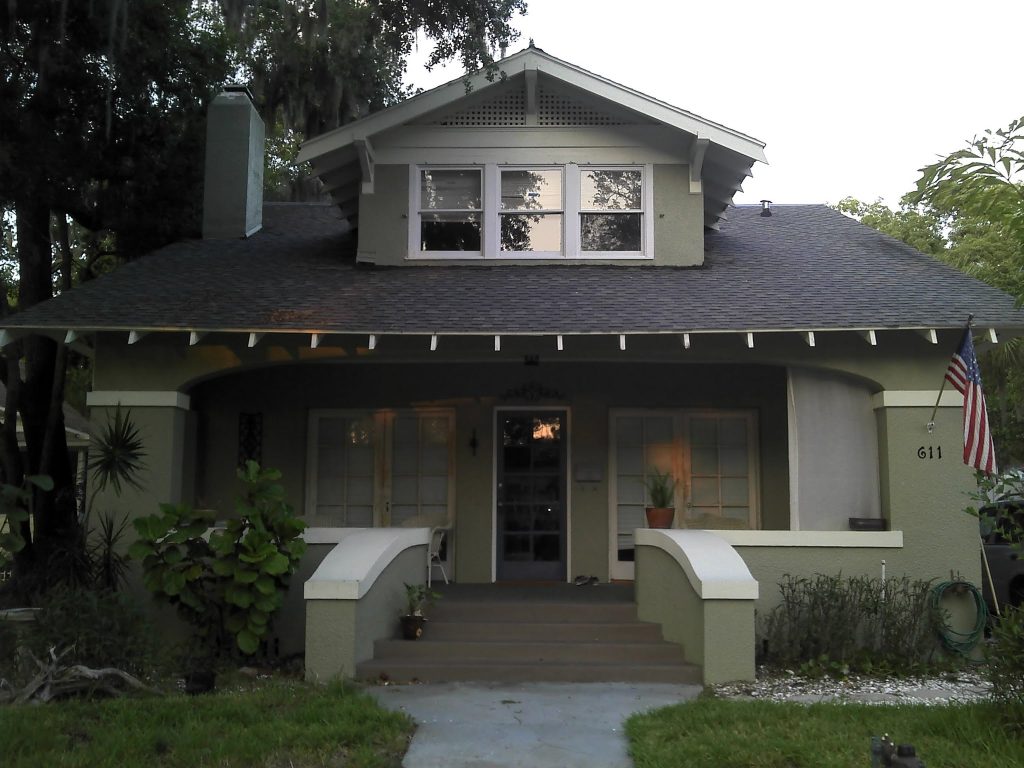
This Craftsman house is 1-1/2 stories, which means the second level is under the roof rather that a full 2nd story on its own. It has a moderately low pitched roof and a full width porch. This is definitely a bungalow.
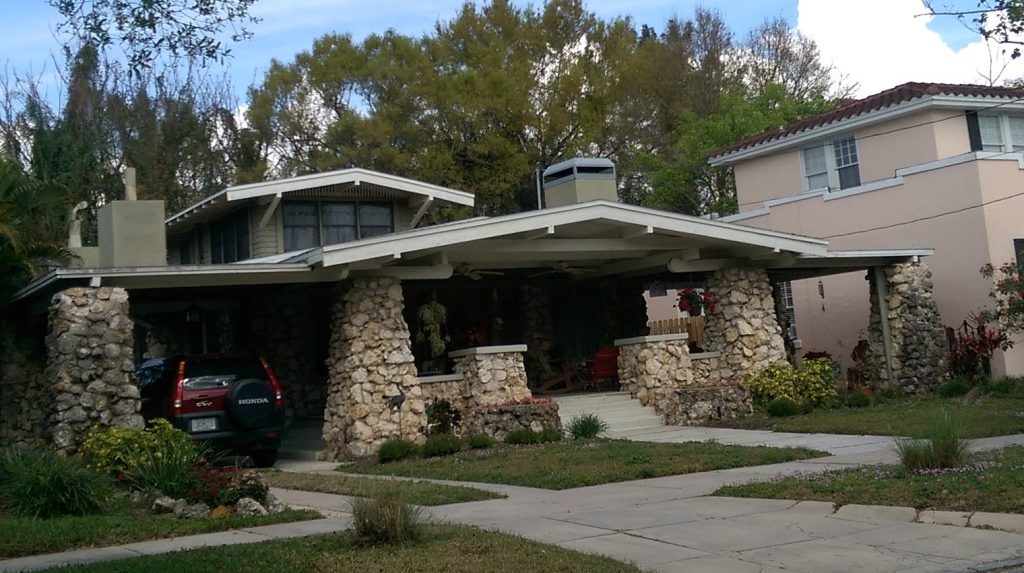
This Craftsman house is a variation of the bungalow form known as an Airplane bungalow. In this house type, there is a small second floor perched over the house, much like a cockpit in an older style plane.
THE CRAFTSMAN/BUNGALOW CONFUSION
This is where people tend to get the most confused since the phrase Craftsman Bungalow is used together so often. The association comes from the reality that many Craftsman style homes are in the form of a bungalow. In fact, you can find entire neighborhoods that consist almost entirely of Craftsman bungalows. But you can have a bungalow that is not Craftsman style. And you can have a Craftsman style home that is not a bungalow.
The exquisite Gamble House is a perfect example of a Craftsman house that is not a bungalow. The house is considered to be the epitome of Craftsman styling but does not meet the criteria of the bungalow form, as it has three rambling stories.
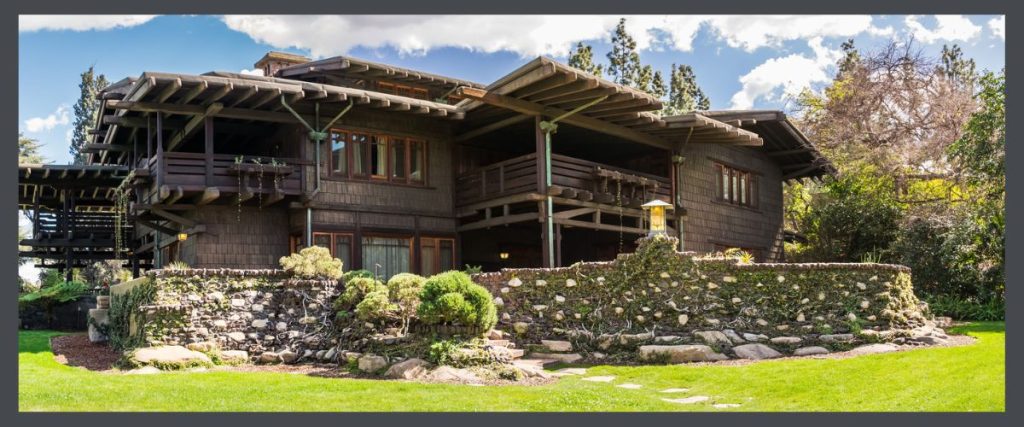
![]()
 This article was written by Jo-Anne Peck of Preservation Resource, Inc. & Historic Shed. Jo-Anne is a historic preservation professional with a degree in Building Science, a Master’s of Fine Arts in Historic Preservation & a licensed Florida Building Contractor with over 25 years experience in preservation. She has kindly provided these photos & this information based on her vast knowledge of bungalows.
This article was written by Jo-Anne Peck of Preservation Resource, Inc. & Historic Shed. Jo-Anne is a historic preservation professional with a degree in Building Science, a Master’s of Fine Arts in Historic Preservation & a licensed Florida Building Contractor with over 25 years experience in preservation. She has kindly provided these photos & this information based on her vast knowledge of bungalows.
 STAY IN THE BUNGALOW KNOW!!!
STAY IN THE BUNGALOW KNOW!!!
Sign up for our newsletter & receive our FREE E-book, 7 VITAL Things to Do Before You Hire a Contractor.



Jo-Anne Peck knows what she is talking about. She is a professional you can trust. Great article. I was a victim of Bungalow vs Craftsman confusion. After reading this I understand.
Thank you so much for your kind words. I am so glad you found this information useful!
I didn’t realize I didn’t know what a bungalow was or wasn’t so this article was very informative! Thank you!
So glad we were able to help you learn something new!
Thank you for all your great information.
You are so welcome! We love talking to people about bungalows!
I’m in love with one of the homes you have posted. So much that I am wanting the building plans. Do you addresses for some of the homes you have pictures of? I can then contact the county.
I do not have addresses for most of the bungalows I post. I’m so sorry.
One thing rarely talked about is the fact that the bungalow originated in India. Although the term bungalow now commonly describes a small one- or one-and-a-half-story home or casual beach house, the word actually derives from the Indian Hindustani word bangala, meaning belonging to Bengal. Indeed, the British first built bungalows in India in the mid-19th century.
Yes, this is so true! Thank you for mentioning this very good fact.